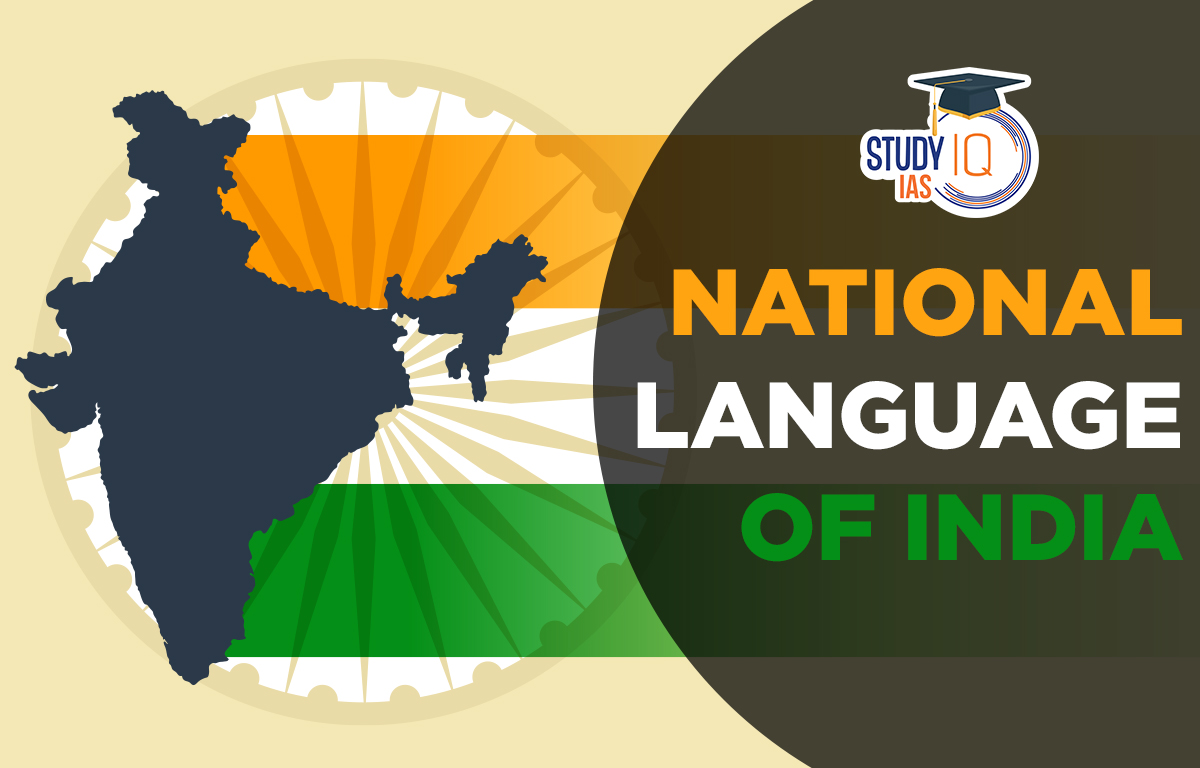Table of Contents
India, known for its rich cultural and linguistic diversity, does not have a designated national language as per its Constitution. Instead, the country recognizes Hindi (in Devanagari script) and English as the official languages for governmental purposes. This article provides a comprehensive overview of India’s linguistic framework, focusing on the significance of the 22 official languages recognized in the Constitution.
National Language of India
India’s vastness is mirrored in its multitude of languages and dialects, reflecting the unique cultural heritage of each of its 28 states and 8 Union Territories. According to the Eighth Schedule of the Indian constitution, there are 22 scheduled languages spoken extensively across various regions. The absence of a national language has been a subject of ongoing discussion and debate, given the linguistic plurality inherent in Indian society.
Understanding National Language vs. Official Language
It is essential to distinguish between a national language and an official language:
- National Language: A language that signifies the identity and cultural essence of a nation and is often spoken by a large portion of the population.
- Official Language: Used for government communication, administration, and legal proceedings. A country can have multiple official languages.
In India, Hindi and English are designated as the official languages, while no language has been officially recognized as the national language. The following sections explore the nuances of India’s linguistic policies and the importance of scheduled languages.
National Language of India as per Constitution
Due to the country’s cultural variety, none of the languages are given the status of the National Language of India. In India, less than 44% of the population speaks Hindi. For many years, there has been discussion about making Hindi an official language, but with no success. As per the Indian constitution, no language is designated as India’s national language till date. To be used for official purposes across the nation, Hindi and English have been designated as the official languages.
Constitutional Provisions
Article 343(1) of the Indian Constitution states that Hindi written in Devanagari will be the official language of the Union. The international version of Indian numerals shall be utilized for all official purposes of the Union. Only Hindi or English is allowed for official business in the Indian parliament and government buildings. In the entire nation, English may be used for official purposes, including legislative proceedings, correspondence between the Central Government and a State Government, and legal processes.
- In accordance with Article 343, the Central Government only communicates with the states in the Hindi Belt in Hindi.
- When interacting with the states, English is to be used as an Associate Official Language.
List of 22 Official Languages of India
The eighth schedule of the Indian Constitution recognizes 22 different languages. Articles 343 to 351 of Part XVII of the Indian Constitution address the country’s official tongues. The remaining languages were eventually added, following a number of changes, as initially only 14 languages were specified. Check here the list of all 22 Indian languages that the Indian Constitution recognizes.
| Sr. No | Language | Recognition in state |
| 1 | Assamese | Assam, Arunachal Pradesh |
| 2 | Bengali | West Bengal, Tripura |
| 3 | Bodo | Assam |
| 4 | Dogri | Official language of Jammu and Kashmir |
| 5 | Gujarati | Dadra and Nagar Haveli and Daman and Diu, Gujarat |
| 6 | Hindi | Andaman and Nicobar Islands, Bihar, Dadra and Nagar Haveli and Daman and Diu, Chhattisgarh, Delhi, Gujarat, Haryana, Himachal Pradesh, Jharkhand, Madhya Pradesh, Jammu and Kashmir, Mizoram, Rajasthan, Uttar Pradesh, Uttarakhand, and West Bengal |
| 7 | Kannada | Karnataka |
| Kashmiri | Jammu and Kashmir | |
| 9 | Konkani | Dadra and Nagar Haveli and Daman and Diu, Maharashtra, Goa, Karnataka, and Kerala (The Konkan Coast) |
| 10 | Maithili | Bihar, Jharkhand |
| 11 | Malayalam | Kerala, Lakshadweep, Puducherry |
| 12 | Manipuri | Manipur |
| 13 | Marathi | Maharashtra, Goa, Dadra and Nagar Haveli and Daman and Diu |
| 14 | Nepali | Sikkim and West Bengal |
| 15 | Odia | Official language of Odisha |
| 16 | Punjabi | Official language of Punjab and Chandigarh, 2nd official language of Delhi and Haryana |
| 17 | Sanskrit | Himachal Pradesh, Uttarakhand |
| 18 | Santali | Spoken by Santhal people mainly in the state of Jharkhand as well as in the states of Assam, Bihar, Chhattisgarh, Mizoram, Odisha, Tripura, West Bengal |
| 19 | Sindhi | Gujarat and Maharashtra, especially Ulhasnagar |
| 20 | Tamil | Tamil Nadu, Puducherry |
| 21 | Telugu | Andhra Pradesh, Telangana, and Puducherry |
| 22 | Urdu | Jammu and Kashmir, Telangana, Jharkhand, Delhi, Bihar, Uttar Pradesh, and West Bengal |
National Language Vs Official Language
Any language that is spoken by a sizable portion of a country’s population is considered the national language. It serves social, cultural, and political purposes. The language used for official activity, such as in the national court, parliament, or for business purposes, is often acknowledged and adopted by the government or in the legislature. In accordance with Article 343, the Central Government shall communicate with the Hindi States in Hindi. When communicating with the states, English is to be utilized as an associate official language. Hindi and English are therefore the official languages of India, not the national languages, as stated in the Constitution.
How Many Languages in India?
India officially has two languages, Hindi and English, and according to the 8 schedule, there are 22 languages recognized, which are also major literary languages. The government of India also recognized languages like Kannada, Malayalam, Odia, Sanskrit, Tamil, and Telugu as classical languages. In the 2001 Census, it was noted that more than 10,000 persons spoke 122 languages, and more than a million native speakers spoke 30 languages.
Candidate can check Salary of Chief Minister of India Here
How Many Languages Are Spoken in India?
India has 121 languages and 270 mother tongues, which makes it one of the most linguistically diverse countries in the world. The official languages of India are Hindi and English, whereas there are 22 Scheduled Languages.
Important Amendments Related to Scheduled Languages of India
- 1950: 14 scheduled languages were initially included in the Constitution.
- 1967: Sindhi was added by the 21st Constitutional Amendment Act.
- 1992: Konkani, Manipuri (Meitei) and Nepali were added by the 71st Constitutional Amendment Act
- 2003: Bodo, Dogri, Maithili and Santali were added by the 92nd Constitutional Amendment Act.
- 2011: The spelling Oriya was replaced by Odia by the 96th Constitutional Amendment Act.
Candidate can check National Symbols of India Here!


 List of GI Tag Products in India 2025, S...
List of GI Tag Products in India 2025, S...
 Hurun Global Unicorn Index 2025: Key Hig...
Hurun Global Unicorn Index 2025: Key Hig...
 Largest Desert in the World, Check Name,...
Largest Desert in the World, Check Name,...





















